You Asked: The 8K chicken meets the 8K egg
How big does a TV need to be before 8K makes sense? Is anyone actually putting out an 8K signal? Where are all the 8K TVs? Do 98-inch TVs need to be 8K? And how about that EU energy regulation thing — are 8K TVs actually banned now? It’s 8K all day this week in You Asked!
Today’s edition is the first in which we take a dive into a specific topic. This time I asked, you answered, and it sounds like a lot of you think this is a great idea. So, thank you!
Your 8K TV Questions, Answered | You Asked Ep. 37
Where are the 8K TVs?
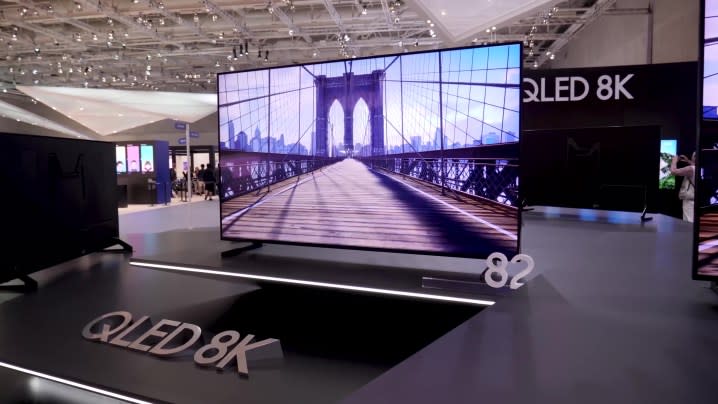
cWebWay2000 asks: It’s 2024, why are we still focused on 4K TVs? Where are my 8K TVs? And Jimmys Brand wrote (in reference to my recent Sony 2024 TV overview video): No 8K TV with their nearly perfected mini-LED formula?
Let’s first start with the shortest 8K TV explainer ever, just so we’re on the same page here. (We have a longer 8K explainer, too, if you want.) Simply put, 8K TVs are TVs with extremely high resolution. The 4K TV that you buy today has four times the resolution — or, four times the number of pixels — as the 1080p TVs we used to buy. Those 1080p TVs were called HD, and 4K TVs are called Ultra HD.
Today, 8K TVs quadruple down on that. They have four times the resolution — four times as many pixels — as 4K TVs. Oddly, though, 8K TVs are not called “Super DEE Duper Ultra HD” or anything silly like that. They are just labeled as 8K Ultra HD. You could essentially fit four 1080p TVs inside a 4K TV (or all their pixels, anyway), and you could essentially fit four 4K TVs worth of pixels into an 8K TV.
Historically, more pixels has meant a sharper, more detailed image. But, ironically, 8K TVs have “blurred the lines” when it comes to tying together higher resolution and higher performance.
It used to be that most major TV brands offered at least one 8K TV model in the U.S. and Europe. Hisense, TCL, Sony, LG, and Samsung all had 8K TVs as their flagship models in 2021, for example. But in 2022, we saw fewer new 8K TVs. And in 2023, at CES, it became clear that 8K TVs were not a focus for any of those brands, except Samsung.
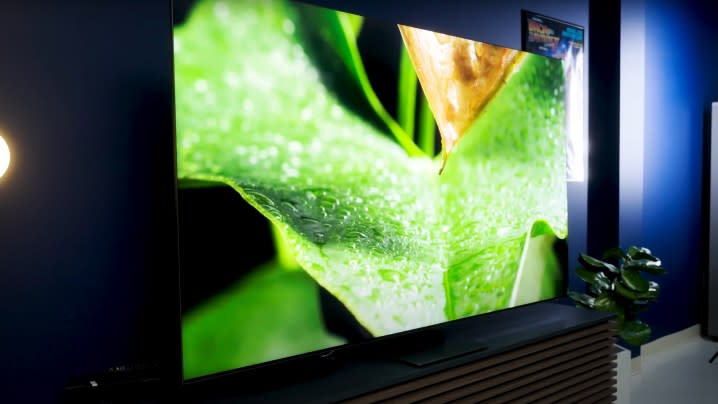
Now, all those brands do make 8K TVs for other markets. And to be fair, LG still has an 8K OLED you can buy starting at $10,000, and the Sony Z9K can still be purchased for $8,000 or so. But those are carry-over models from prior years. Only Samsung is delivering new 8K TVs every year — this year that would be the QN900D and QN800D — and it seems like only Samsung is making them in more approachable screen sizes like 65 inches.
So what happened? Why did TV brands back off of 8K TVs? Well, simply put: They didn’t sell enough of them.
In order for it to be worth making a product, you need to sell enough of them to make a profit. And that’s an uphill climb for 8K TVs because they are more expensive to produce, for any of a variety of reasons.
Naturally, the next question is: “Why didn’t 8K TVs sell well?” The answer to that question ultimately leads to this answer: “Because they were very expensive.” Yes, 8K TVs are expensive to buy because they are expensive to make. But they also needed to be more expensive than 4K TVs because why would you buy a TV with lower resolution at a similar price, right?
And that notion right there — that 8K TVs need to be an obvious upgrade — that’s the other reason that 8K TVs have struggled to sell.
Where’s the 8K content?
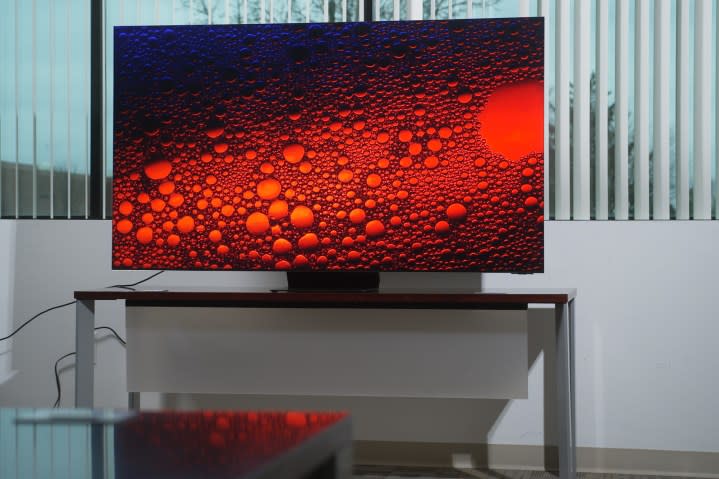
This leads us nicely to another question. It comes from Bear Hall, who asks: “Who puts out an 8K signal?”
I’m going to answer that in just a moment. But, first, I want to call out the sentiment that question points to. It’s the “where’s the content” question.
Quite simply, 8K TVs came out too soon, at least from a consumer marketing perspective. When 8K TVs came out, people were still complaining about a lack of 4K content. This was back before just about everything you streamed on Netflix was in 4K. So the idea that you might buy an 8K TV when even 4K content was hard to come by was laughable. And, in fact, folks still laugh about it today.
But there’s another reason 8K TVs have been on the struggle bus since they were introduced: Folks literally can’t see the benefit. Even with 8K native content, the difference between a 65-inch 4K TV and a 65-inch 8K TV is negligible, at best, to the average consumer. At 85 inches you can see a difference between 4K and 8K with 8K content, but you’ve got to look pretty closely. And, again, the lack of 8K content makes that a problem. The difference between upscaled 4K content and native 8K content on an 85-inch TV is really tough for most people to see. And while 85-inch TVs are a rapidly growing screen size in North America, they tend to be expensive enough as 4K TVs, never mind as an 8K model.
I mean, the 85-inch Samsung QN800D is $6,000. The 85-inch QN900D is $8,000. That’s a rich person’s game.
Do larger screen sizes require 8K?
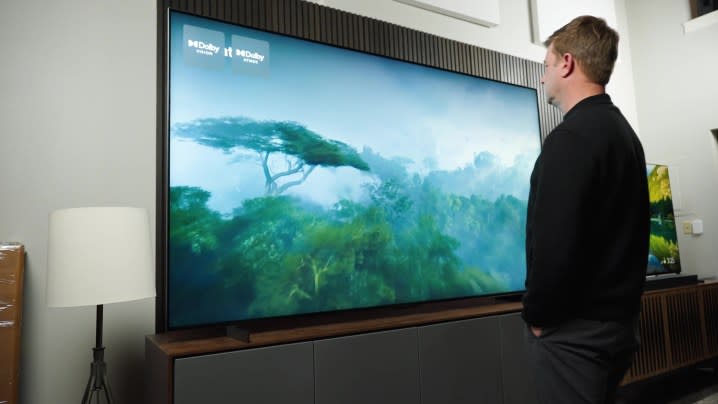
This price talk leads us nicely into two other viewer questions. Ramanuj Lal writes: “What do you think about 4K at 98 inches? Somehow, I feel that 8K with upscaling is required for screen sizes greater than 85 inches for a modern apartment living room setup, what do you feel? And Alder98br writes: Do you think a 98-inch TV requires 8K?
So, I do feel that the 98-inch screen size is the point at which folks can recognize the benefit of 8K over 4K, even if the content being viewed is just 4K content upscaled to 8K by the TV. And it has less to do with the immensity of the screen size than it does with the fact that screen sizes are getting bigger, but living rooms are not.
From a great distance, you can’t see any benefit of 8K over 4K. But, when you’re sitting just 9 to 15 feet from a 98-inch TV? Yeah, you can see the resolution improvement of 8K over 4K.
But now, we have to go back to price. If an 85-inch 8K TV is going for no less than $5,000 or $6,000, there is no way a 98-inch 8K TV could sell for less than $10,000. And likely, it would be way, way more.
This statement may not age well. I wouldn’t be shocked if in four years or so we look back at this article and laugh because 98-inch 8K TVs go for less than $5,000. But for now, a 98-inch 8K TV would be prohibitively expensive.
And while I do think 4K content upscaled to 8K looks better at these larger screen sizes, I still think that a lack of true 8K content to enjoy is going to be part of the problem.
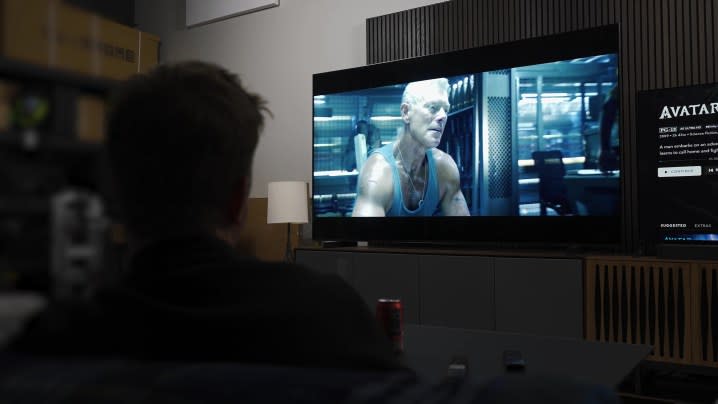
Welcome to the chicken-or-the-egg conundrum that has existed around TVs and content for decades. You can just as easily ask “why make 8K content if there are no 8K TVs to watch it on?” as you can ask “why make 8K TVs if there’s no 8K content to watch?”
It’s easier to ask the latter question because, as consumers, it’s our money we’re talking about, right? Making 8K content is about someone else’s money.
But, historically, TV brands — especially Sony, which came out with the first 4K TV — have shouldered the burden by making the TVs so that content creators had a reason to make the content to play on those TVs.
And I think that’s why we got 8K TVs so soon after 4K TVs were introduced. Maybe the companies involved thought: “Might as well start now!” Or, maybe they saw an opportunity to capitalize on the success 4K was having by pushing this idea that, if you really wanted to future-proof, you’d get the highest-resolution TV you could buy. And, admittedly, I’ve floated that narrative a few times myself.
But, even now, there are precious few sources of 8K content. And the sources that do exist don’t have a ton of 8K content. YouTube is where you’ll find most of the world’s 8K content. You will see 8K broadcasts happening in Japan — because NHK, especially, is just a pioneer like that. But, YouTube is where you’ll find most 8K content.
And I don’t see that changing any time soon. I don’t think we’ll ever see 8K Blu-ray discs. While we may one day see 8K downloads take off, streaming 8K is going to be an issue so long as bandwidth caps — which are a ridiculous, archaic idea in my opinion — continue to be a thing.
So that is the state of affairs around 8K TVs. And the only way I see it changing requires democratizing high-speed internet for everyone with no data caps. When we all have gigabit internet for a flat monthly fee, then maybe the 8K content story will change.
For now, though, the only way 8K TVs can take off is if TV brands decide to flip a switch and just make 8K the new standard. Panel manufacturers will need to transition to making mostly 8K panels, upscaling processors need to get more powerful for less money, and TV brands will need to commit to making 8K TVs the norm — and they’ll have to figure out how to make them energy efficient and less expensive to produce.
Then, and only then, will be see the 8K revolution we were promised over five years ago.

